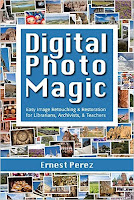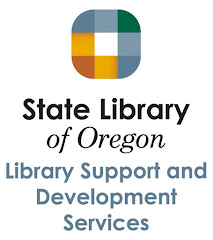
Johnston, Lisa R. (ed.) Curating Research Data. Volume 1-2. Association of College and Research Libraries, 2017. ISBN: 978-0-8389-8918-0
Description
In two volumes—Practical Strategies for Your Digital Repository and A Handbook of Current Practice—Curating Research Data presents those tasked with long-term stewardship of digital research data a blueprint for how to curate those data for eventual reuse. Volume One explores the concepts of research data and the types and drivers for establishing digital data repositories. Volume Two guides you across the data lifecycle through the practical strategies and techniques for curating research data in a digital repository setting. Data curators, archivists, research data management specialists, subject librarians, institutional repository managers, and digital library staff will benefit from these current and practical approaches to data curation.
Table of Contents
Volume 1 - Practical Strategies for Your Digital Repository
Part I. Setting the Stage for Data Curation. Policies, Culture, and Collaboration
Chapter 1. Research and the Changing Nature of Data Repositories
Karen S. Baker and Ruth E. Duerr
Chapter 2. Institutional, Funder, and Journal Data Policies
Kristin Briney, Abigail Goben, and Lisa Zilinski
Chapter 3. Collaborative Research Data Curation Services: A View from Canada
Eugene Barsky, Larry Laliberté, Amber Leahey, and Leanne Trimble
Chapter 4. Practices Do Not Make Perfect: Disciplinary Data Sharing and Reuse Practices and Their Implications for Repository Data Curation
Ixchel M. Faniel and Elizabeth Yakel
Chapter 5. Overlooked and Overrated Data Sharing: Why Some Scientists Are Confused and/or Dismissive
Heidi J. Imker
Part II. Data Curation Services in Action
Chapter 6. Research Data Services Maturity in Academic Libraries
Inna Kouper, Kathleen Fear, Mayu Ishida, Christine Kollen, and Sarah C. Williams
Chapter 7. Extending Data Curation Service Models for Academic Library and Institutional Repositories
Jon Wheeler
Chapter 8. Beyond Cost Recovery: Revenue Models and Practices for Data Repositories in Academia
Karl Nilsen
Chapter 9. Current Outreach and Marketing Practices for Research Data Repositories
Katherine J. Gerwig
Part III. Preparing Data for the Future. Ethical and Appropriate Reuse of Data
Chapter 10. Open Exit: Reaching the End of the Data Life Cycle
Andrea Ogier, Natsuko Nicholls, and Ryan Speer
Chapter 11. The Current State of Meta-Repositories for Data
Cynthia R. Hudson Vitale
Chapter 12. Curation of Scientific Data at Risk of Loss: Data Rescue and Dissemination
Robert R. Downs and Robert S. Chen
Volume 2 - A Handbook of Current Practice
Preliminary Step 0: Establish Your Data Curation Service
Step 1.0: Receive the Data
1.1 Recruit Data for Your Curation Service
1.2 Negotiate Deposit
1.3 Transfer Rights (Deposit Agreements)
1.4 Facilitate Data Transfer
1.5 Obtain Available Metadata and Documentation
1.6 Receive Notification of Data Arrival
Step 2.0: Appraisal and Selection Techniques that Mitigate Risks Inherent to Data
2.1 Appraisal
2.2 Risk Factors for Data Repositories
2.3 Inventory
2.4 Selection
2.5 Assign
Step 3.0: Processing and Treatment Actions for Data
3.1 Secure the Files
3.2 Create a Log of Actions Taken
3.3 Inspect the File Names and Structure
3.4 Open the Data Files
3.5 Attempt to Understand and Use the Data
3.6 Work with Author to Enhance the Submission
3.7 Consider the File Formats
3.8 File Arrangement and Description
Step 4.0: Ingest and Store Data in Your Repository
4.1 Ingest the Files
4.2 Store the Assets Securely
4.3 Develop Trust in Your Digital Repository
Step 5.0: Descriptive Metadata
5.1 Create and Apply Appropriate Metadata
5.2 Consider Disciplinary Metadata Standards for Data
Step 6.0: Access
6.1 Determine Appropriate Levels of Access
6.2 Apply the Terms of Use and Any Relevant Licenses
6.3 Contextualize the Data
6.4 Increase Exposure and Discovery
6.5 Apply Any Necessary Access Controls
6.6 Ensure Persistent Access and Encourage Appropriate Citation
6.7 Release Data for Access and Notify Author
Step 7.0: Preservation of Data for the Long Term
7.1 Preservation Planning for Long-Term Reuse
7.2 Monitor Preservation Needs and Take Action
Step 8.0: Reuse
8.1 Monitor Data Reuse
8.2 Collect Feedback about Data Reuse and Quality Issues
8.3 Provide Ongoing Support as Long as Necessary
8.4 Cease Data Curation
Brief Concluding Remarks and a Call to Action
Bibliography
Biographies




